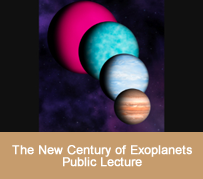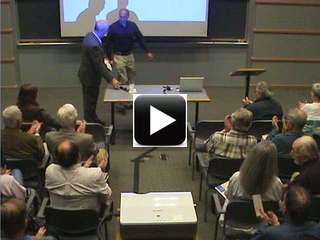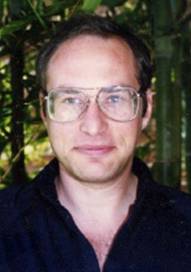
The study of exoplanets has emerged in the last decade to be one
of the most exciting new areas of astronomy and planetary science. Since
1995, more than 430 planets outside the solar system have been
discovered. Collectively, they span a huge range of masses and orbital
distances, have been found around most types of stars, and have led to
major revisions in our ideas of how and where planets form. The majority
of these planets are gas giants like Jupiter, but more than 60 are of
Neptune mass. Excitingly, some of the recently discovered planets are
near the mass and radius of the earth. Hence, the pioneering era of
exoplanets has commenced in earnest and promises to be a central focus
of an increasing fraction of the world’s astronomers for the foreseeable
future. I will review the current state of this burgeoning field, what
we have discovered to date, and what the future may hold as we
accelerate the discovery of the myriad worlds now just over our horizon
and coming fast into view.

To download: Right-click and choose "Save Link As..." (Other video options)
To begin viewing slides, click on the first slide below. (Or, view as pdf.)
![[01]](tn/01.jpg)
![[02]](tn/02.jpg)
![[03]](tn/03.gif)
![[04]](tn/04.jpg)
![[05]](tn/05.jpg)
![[06]](tn/06.jpg)
![[07]](tn/07.gif)
![[08]](tn/08.gif)
![[09]](tn/09.jpg)
![[10]](tn/10.jpg)
![[11]](tn/11.jpg)
![[12]](tn/12.gif)
![[13]](tn/13.jpg)
![[14]](tn/14.jpg)
![[15]](tn/15.jpg)
![[16]](tn/16.jpg)
![[17]](tn/17.jpg)
![[18]](tn/18.gif)
![[19]](tn/19.jpg)
![[20]](tn/20.jpg)
![[21]](tn/21.jpg)
![[22]](tn/22.jpg)
![[23]](tn/23.jpg)
![[24]](tn/24.jpg)
![[25]](tn/25.jpg)
![[26]](tn/26.jpg)
![[27]](tn/27.jpg)
![[28]](tn/28.jpg)
![[29]](tn/29.jpg)
![[30]](tn/30.jpg)
![[31]](tn/31.jpg)
![[32]](tn/32.jpg)
![[33]](tn/33.gif)
![[34]](tn/34.jpg)
![[35]](tn/35.jpg)
![[36]](tn/36.gif)
![[37]](tn/37.jpg)
![[38]](tn/38.gif)
![[39]](tn/39.jpg)
![[40]](tn/40.jpg)
![[41]](tn/41.gif)
![[42]](tn/42.gif)
![[43]](tn/43.jpg)
![[44]](tn/44.gif)
![[45]](tn/45.jpg)
![[46]](tn/46.jpg)
![[47]](tn/47.gif)
![[48]](tn/48.jpg)
![[49]](tn/49.jpg)
![[50]](tn/50.jpg)
![[51]](tn/51.jpg)
![[52]](tn/52.jpg)
![[53]](tn/53.jpg)
![[54]](tn/54.gif)
![[55]](tn/55.gif)
![[56]](tn/56.jpg)
![[57]](tn/57.jpg)
![[58]](tn/58.jpg)
![[59]](tn/59.jpg)
![[60]](tn/60.jpg)
![[61]](tn/61.jpg)
![[62]](tn/62.gif)
![[63]](tn/63.gif)
![[64]](tn/64.jpg)
![[65]](tn/65.jpg)
![[66]](tn/66.jpg)
![[67]](tn/67.jpg)
![[68]](tn/68.jpg)
![[69]](tn/69.gif)
![[70]](tn/70.jpg)
![[71]](tn/71.jpg)
![[72]](tn/72.jpg)
![[73]](tn/73.jpg)
![[74]](tn/74.gif)
![[75]](tn/75.jpg)
![[76]](tn/76.jpg)
![[77]](tn/77.jpg)
![[78]](tn/78.jpg)
![[79]](tn/79.jpg)
![[80]](tn/80.jpg)
![[81]](tn/81.gif)
![[82]](tn/82.jpg)
![[83]](tn/83.jpg)
![[84]](tn/84.jpg)
![[85]](tn/85.jpg)
